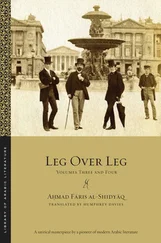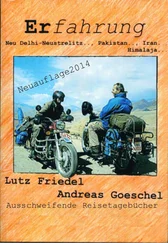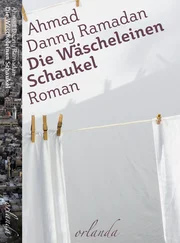Omair Ahmad - Delhi Noir
Здесь есть возможность читать онлайн «Omair Ahmad - Delhi Noir» весь текст электронной книги совершенно бесплатно (целиком полную версию без сокращений). В некоторых случаях можно слушать аудио, скачать через торрент в формате fb2 и присутствует краткое содержание. Город: New York, Год выпуска: 2009, ISBN: 2009, Издательство: Akashic Books, Жанр: Детектив, на английском языке. Описание произведения, (предисловие) а так же отзывы посетителей доступны на портале библиотеки ЛибКат.
- Название:Delhi Noir
- Автор:
- Издательство:Akashic Books
- Жанр:
- Год:2009
- Город:New York
- ISBN:978-1-933354-78-1
- Рейтинг книги:3 / 5. Голосов: 1
-
Избранное:Добавить в избранное
- Отзывы:
-
Ваша оценка:
- 60
- 1
- 2
- 3
- 4
- 5
Delhi Noir: краткое содержание, описание и аннотация
Предлагаем к чтению аннотацию, описание, краткое содержание или предисловие (зависит от того, что написал сам автор книги «Delhi Noir»). Если вы не нашли необходимую информацию о книге — напишите в комментариях, мы постараемся отыскать её.
Brand-new stories by
Delhi Noir — читать онлайн бесплатно полную книгу (весь текст) целиком
Ниже представлен текст книги, разбитый по страницам. Система сохранения места последней прочитанной страницы, позволяет с удобством читать онлайн бесплатно книгу «Delhi Noir», без необходимости каждый раз заново искать на чём Вы остановились. Поставьте закладку, и сможете в любой момент перейти на страницу, на которой закончили чтение.
Интервал:
Закладка:
I asked him to tell me all about it, and he did; and now I’ve told you everything he told me. When he finished — just as I was about to see if I could find some way to help — Sushma showed up.
“Meet me here tomorrow morning. I’ve got to go,” Ramnivas said, and the two of them jumped in a rickshaw. I watched them ride away until I couldn’t see them any longer. That was the last time I saw Ramnivas.
He hasn’t come back to this little corner of the street.
He’ll never come back. If you ask anyone about him, no one will say a word.
And if you keep going from this corner to the sixteenth-century ruins at the bypass, and ask Saliman, Somali, Bhusan, Tilak, or Rizvan about Ramnivas, you’ll get the same blank stare. Ask Rajvati and her husband Gulshan, who sell hard-boiled eggs at night — they’ll all give you the brush-off.
Even the fair and graceful Sushma, who comes every day from Samaypur Badli to clean people’s homes, will walk right past you at a brisk pace without so much as a word. That’s how bad it is. Nowadays, she’s been seen with Santosh munching on chat and papri in front of the Sheela Cinema.
And if you happen to travel to that little settlement by the sewage runoff and manage to ask for the address of the tiny hut that Ramnivas had converted into a real house, and, once there, ask his wife Babiya or his sickly son Rohan or his daughter Urmila, Where is Ramnivas? you’ll face a stare as blank and cold as stone. They’ll say, He’s out of town . If you ask when he’ll be back, Babiya will reply, “How should I know?”
No one in all of Delhi has any idea about Ramnivas — that much is clear. He simply doesn’t exist anywhere — no trace is left. But I’m about to give you the final facts about him.
If you read any of the Hindi or English newspapers that come out in Delhi — say, Indian News Express, Times of Metro India, or Shatabdi Sanchar Times — and open the June 27, 2001 edition to page three, you’ll see a tiny photograph on the right side of the page. Below the photo, the headline of the capsule news item read, Robbers Killed in Encounter, and below that, the subheader: Police Recover Big Money from Car .
The three-line capsule was written by the local crime reporter, according to whom, the night before, near Buddha Jay-anti Park, the police tried to stop a Suzuki Esteem that bore no license plate and was traveling on Ridge Road from Dhaula Kuan. Instead of stopping, the people inside the car opened fire. The police returned fire. Two of the criminals were killed on the spot, while three others fled. One of the dead was Kuldip, a.k.a. Kulla, a notorious criminal from Jalandhar. The other body could not be identified. Police Assistant Superintendent Sabarwal said that 2.3 million rupees were recovered from the trunk of the car, most of which were counterfeit five-hundred-rupee bills. He stressed the importance of information provided by the Agra police in netting the loot.
If you were to examine the photo printed above this news item, you’d notice that the car is parked right in front of Buddha Jayanti Park. The dead man lying faceup in the street next to its back door, mouth open, pants coming undone and shirt unbuttoned, chest riddled with bullet holes, is none other than Ramnivas — the “criminal” who, to this day, remains un-identified.
Now, listen to what happened that day, a few hours before the encounter.
According to Govind, who sells chai in front of A-11/DX33, Saket, that night at 10, a police Gypsy came with three plainclothes cops. They went into the gym, kicked everyone out, and then themselves left. An hour later, as Govind was closing his stall, the Esteem pulled up. It didn’t have any license plates, and a Sikh, not too tall, not too short, got out.
Ramnivas stepped out of the backseat right after him.
They went inside and stayed for about an hour and a half.
They kept carrying stuff from the building and loading it into the trunk of the vehicle. An undercover Ambassador car pulled up right around the corner, and followed the Esteem when it began to pull away.
Govind said Ramnivas looked incredibly stressed, his eyes glazed over like a corpse’s. He’d tried to say something to Ramnivas, but the Esteem was gone in a flash — the Sikh was driving.
According to what Ramnivas told me about the space behind the wall in the gym at Saket, it must have been pretty large. Conservatively, I figured it had to have been an area of about twelve by four feet. Ramnivas said the space was crammed full of hundred-and five-hundred-rupee bills. Based on that, I did the math. What I came up was that there was easily anywhere from a hundred to a hundred-and-fifty million rupees in there.
Do you remember the case where the Central Bureau raided a cabinet minister’s house, along with a few of his other properties? The investigation was launched by the government that had just come into power, and the cabinet minister under investigation had been part of the previous government. The minister was charged with taking something like a billion rupees in kickbacks from a foreign company that supplied high-tech equipment. The man did a little time, and was later released. He then joined the very same government that had earlier begun the investigation. It’s clear that Ramnivas, guided by auspicious astrological alignments, or just dumb luck, had discovered a problem with his broom; and in order to solve it, he began banging the butt against the wall.
He figured out the wall was hollow, got his hands inside, and was suddenly face-to-face with money hidden from the eyes of the Central Bureau and the tax man. It was unaccounted money, untraceable money — dirty money.
You already know that only a few lakhs of rupees were recovered from the trunk after Kuldip, a.k.a. Kulla, and Ramnivas were killed on Ridge Road that night — and a large part of that cash was counterfeit too. This, when we know that there was some one hundred-and-fifty million rupees taken out of that wall. What happened?
Kulla, a career criminal, had so many cases pending in court that the police could use him as they pleased. He worked as an informant, reporting to the police station each and every day. He spied for them, pimped for them, and provided false testimony as needed. But they say that a few days before that fatal episode, he got into a fight with the station superintendent, who accused Kulla of playing both sides and being on the take from another party. He’s become more trouble than he’s worth. Let’s make the problem disappear. So the police killed two birds with one stone, disposing of Kulla in a manufactured encounter and getting their hands on the cash. A police captain plotted the whole thing with a couple of trusted underlings: low risk, high payoff. The cops split the spoils among themselves, and they didn’t forget their friends in Agra. And the officer behind the plot received a medal and promotion for his good deed that day.
It doesn’t matter how many weeks or months or years I’ve got left in this sorry life before I also disappear — but I, too, would like to enter into a world of my dreams, just as Ramnivas did.
So that’s why every night at midnight, when all of Delhi is asleep, I put on some black clothes, sneak out of the house, and spend the rest of the night scraping out the walls of Delhi. Treasures beyond anyone’s wildest dreams are hidden in the countless hollows in Delhi’s countless walls. I’m sure it’s there.
My only regret is that I’ve wasted the last decades of my life before starting out with my pick and trowel.
So if you read this story, go and buy a little pickax and get yourself to Delhi right away. It’s not far at all, and it’s the only way left to make it big. The other ways you read about in the papers and see on TV are rumors and lies, nothing more.
Читать дальшеИнтервал:
Закладка:
Похожие книги на «Delhi Noir»
Представляем Вашему вниманию похожие книги на «Delhi Noir» списком для выбора. Мы отобрали схожую по названию и смыслу литературу в надежде предоставить читателям больше вариантов отыскать новые, интересные, ещё непрочитанные произведения.
Обсуждение, отзывы о книге «Delhi Noir» и просто собственные мнения читателей. Оставьте ваши комментарии, напишите, что Вы думаете о произведении, его смысле или главных героях. Укажите что конкретно понравилось, а что нет, и почему Вы так считаете.












